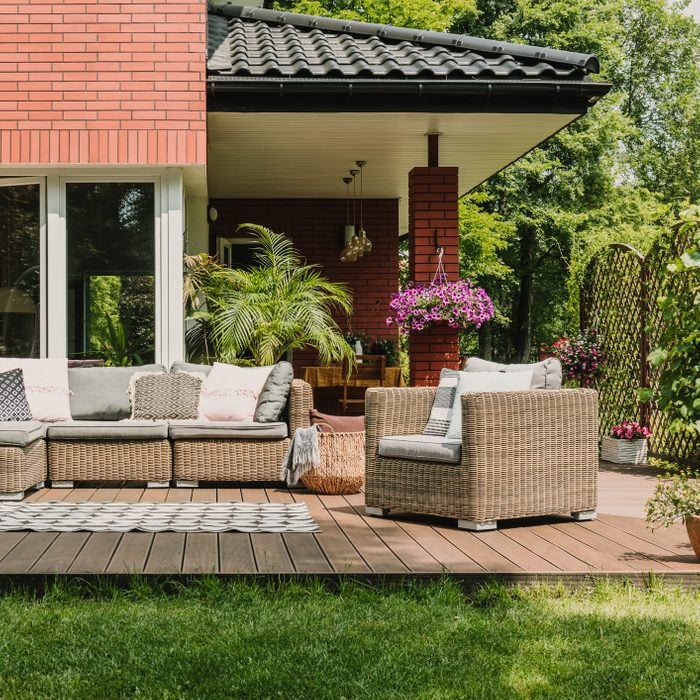8 Creative Floating Deck Designs

What Is a Floating Deck?
Despite its name, a floating deck (AKA a ground-level or a freestanding deck) isn’t found on water. It’s actually a low deck platform that can be placed anywhere in the yard.
It doesn’t attach to a building or require handrails. It sits directly on the ground with simple deck footings, giving the illusion of floating. And because it doesn’t require deep frost-level footings, rails or stairs, it’s a straightforward DIY project that often can be done in a day!
Types of floating decks
In general, a floating deck doesn’t rise more than 30 inches off the ground. Any higher, and most local building codes require handrails and a building permit. Choose the type of footing from among deck blocks, concrete blocks, adjustable deck supports or deck foot anchors.
Just like traditional decks, there are lots of options for wood or composite decking material, color and style. Pressure-treated wood will give your deck a chunky, sturdy look. If you want rich color and natural grain texture, try cedar or redwood. Composite decking requires less maintenance than real wood but can be much more expensive.
Floating deck pros
- Easy to build.
- Usually doesn’t require a permit (check local building codes).
- No need to dig deep footings.
- Easier access for repairing and maintenance.
- More affordable than a traditional deck.
- Freedom to build almost anywhere in the yard.
Floating deck cons
- Susceptible to damage in heavy storms, which can knock ground-level footings loose.
- Might need to control weeds from growing between the deck boards.
- Can potentially sag or tilt if the ground settles.
- Doesn’t increase resale value as much as a traditional deck.
No comments